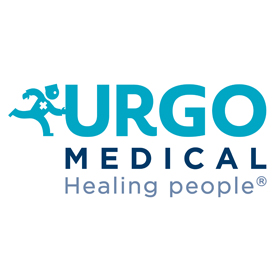Use of photobiomodulation with blue light in the treatment of ulcers of various etiology in spinal cord injured patients: a case series

Submitted: March 27, 2023
Accepted: June 9, 2023
Published: July 25, 2023
Accepted: June 9, 2023
Abstract Views: 366
PDF: 81
PDF (Italiano): 129
PDF (Italiano): 129
Publisher's note
All claims expressed in this article are solely those of the authors and do not necessarily represent those of their affiliated organizations, or those of the publisher, the editors and the reviewers. Any product that may be evaluated in this article or claim that may be made by its manufacturer is not guaranteed or endorsed by the publisher.
All claims expressed in this article are solely those of the authors and do not necessarily represent those of their affiliated organizations, or those of the publisher, the editors and the reviewers. Any product that may be evaluated in this article or claim that may be made by its manufacturer is not guaranteed or endorsed by the publisher.
Similar Articles
- Giuseppe Nebbioso, Ciro Falasconi, Viviana Nebbioso, Francesco Petrella, Pain and chronic skin ulcers , Italian Journal of Wound Care: Vol. 4 No. 1 (2020)
- Stefano Mancin, Elena Alterchi, Silvia Finazzi, Salvatore Badalamenti, Nursing and wound care in the patient with chronic kidney disease in dialytic treatment , Italian Journal of Wound Care: Vol. 5 No. 1 (2021)
- Marina Pierangeli, Giovanni Ruocco, Vanya Recchi, Valentina Cecconato, Costanza Binci, Yasmine Zavalloni, Davide Talevi, Matteo Torresetti, Giovanni Di Benedetto, Alessandro Scalise, Medical Honey in clinical practice: our experience in 75 treated cases , Italian Journal of Wound Care: Vol. 4 No. 1 (2020)
- Aurora Parodi, Valeria Maria Messina, Manuela Martolini, Shpresa Haxhiaj, Emanuele Claudio Cozzani, Update on the management and treatment of patients with chronic skin lesions , Italian Journal of Wound Care: Vol. 5 No. 2 (2021)
- Roberto Anichini, Enrico Brocco, Marco Cavallini, Roberto Da Ros, Luigi Uccioli, Ciro Pempinello, Elisabetta Salutini, Maurizio Volpini, Alice Volpini, Luca Monge, Grey-zone in the treatment of patients with Diabetic Foot. The results of an Italian multidiscipli-nary Delphi survey conducted among a group of experts , Italian Journal of Wound Care: Vol. 4 No. 2 (2020)
- Patrizia D'Incecco, Management of painful and potentially infected skin lesions: Transversal activities of community and family nursing , Italian Journal of Wound Care: Vol. 6 No. 2 (2022)
- Elia Ricci, Monica Pittarello, Francesco Giacinto, Evaluation study of ozoyl Rigenoma in the treatment of lesions chronic skin lesions , Italian Journal of Wound Care: Vol. 6 No. 2 (2022)
- Margherita Farì, Maurizio Mercuri , Alessandro Scalise , Continuity of care in the management of pressure lesions: An information leaflet for hospital-territory collaboration , Italian Journal of Wound Care: Vol. 5 No. 1 (2021)
- Alessandra Surace, Jessica Mauro, Elisa Tripodi, Stefania Perotto, Chiara Borghi, Sara Paracchini, Manuela Scatà, Alessandro Antonio Buda, Prevention of surgical site infections in gynecology and obstetrics:a literature review and proposed management algorithm , Italian Journal of Wound Care: Vol. 8 No. 2 (2024)
You may also start an advanced similarity search for this article.



 https://doi.org/10.4081/ijwc.2023.97
https://doi.org/10.4081/ijwc.2023.97






